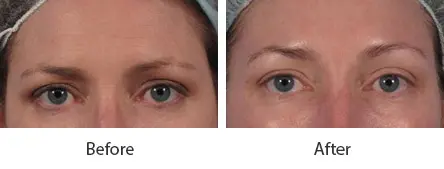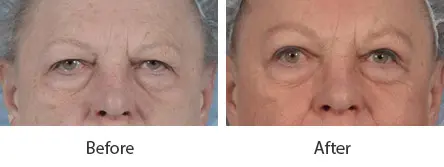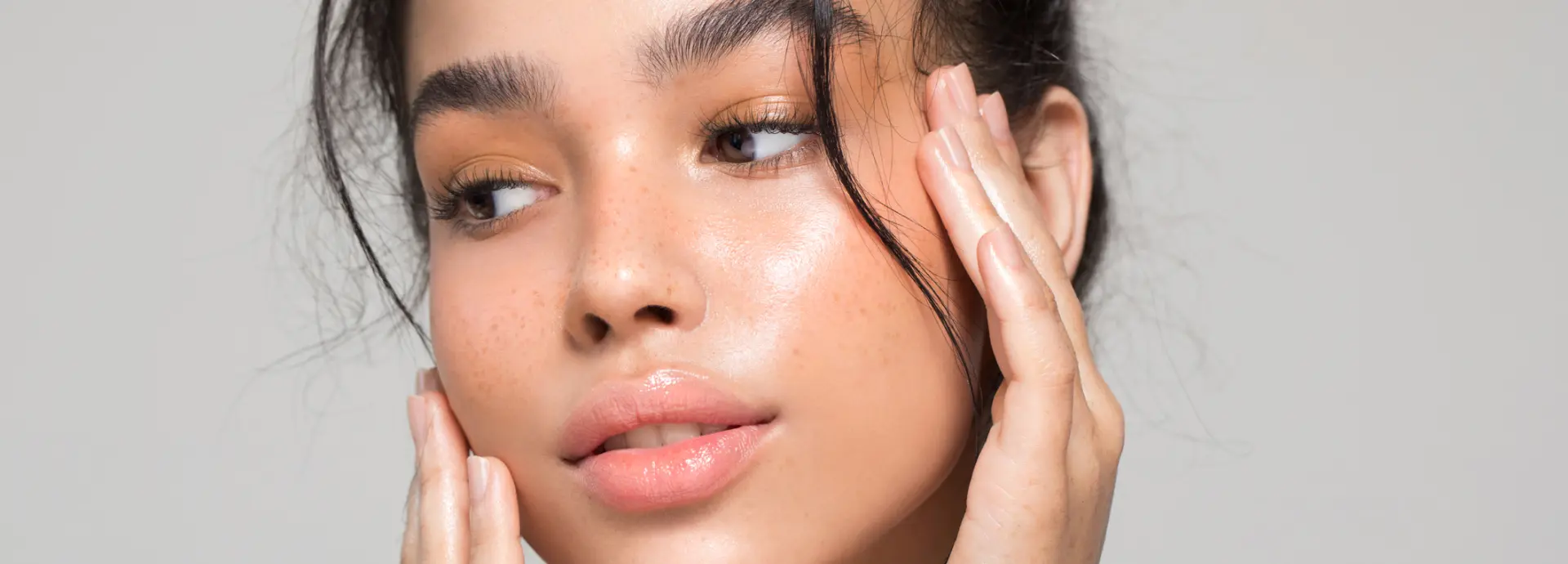Ever catch a glimpse of yourself in the mirror and wonder when those furrowed brows became your everyday look? It’s not just you. It happens to all of us as we age.
But here’s the good news: at Allure Medical, we can turn that around.
Our eyebrow lift surgery, also known as a brow lift or browplasty, is your ticket to bidding farewell to those tired, sad, or angry expressions that don’t reflect how you truly feel inside.
Let’s bring back that youthful, vibrant spark to your eyes and face!
Turn Back Time with an Eyebrow Lift at Allure Medical
Eyebrow lift surgery, also known as a brow lift or browplasty, is a cosmetic procedure that corrects drooping eyebrows and restores a more youthful and refreshed look to the upper face.
As we age, our eyebrows tend to descend, making us appear tired, sad, or angry even when we feel fine. An eyebrow lift counteracts gravity’s effects on the brows by elevating and smoothing the forehead for a more alert and positive expression.
At Allure Medical, our experienced surgeons provide personalized eyebrow lift treatments to help patients put their best face forward.
The Problem of Drooping Eyebrows
The position and shape of the eyebrows have a significant impact on facial expressions and emotions conveyed. Over time, the eyebrows naturally descend due to a combination of factors:
- Loss of elasticity in the forehead skin -Weakening of muscles and soft tissues around the brow
- Gravity pulling on the eyebrows
- Loss of volume in underlying fat pads
This descent leads to excess upper eyelid skin, creases across the forehead, and a permanent look of tiredness, anger, or sadness. Patients often feel like they look grumpy or stern even when they are happy and relaxed.
An eyebrow lift restores a neutral brow position to accurately portray emotions.
What Causes Eyebrow Drooping?
Aging is the primary cause of eyebrow drooping, but other factors can accelerate descent:
- Sun exposure: UV radiation damages collagen and elastin over time.
- Smoking: Chemicals in smoke degrade skin proteins.
- Allergies: Rubbing and itching leads to mechanical damage.
- Genetics: Some people have weaker brows anatomically.
- Medical conditions: Nerve damage or muscle issues.
- Medications: Certain drugs weaken connective tissues.
Understanding what leads to eyebrow drooping helps our surgeons determine the right treatment approach for each patient during consultations.
Preparing for Eyebrow Lift Surgery
Before the eyebrow lift surgery, patients meet with our surgeons for a consultation and medical evaluation. We review your health history, including:
- Past surgeries or injections
- Medications and supplements
- Allergies and dry eyes
- Nerve or muscle conditions
Photographs and measurements are taken of the eyebrow position and degree of descent.
For a surgical brow lift, you may be asked to stop certain medications, supplements, or activities that increase bleeding risks for a period before surgery.
Brow Lift Techniques Offered at Allure Medical
We offer both surgical and nonsurgical options for eyebrow elevation at Allure Medical. Our skilled surgeons will help determine the best approach based on your unique anatomy and goals.
Nonsurgical Brow Lift
For mild descent, Botox or Dysport injections can provide a temporary lift by relaxing the glabella muscles between the brows. Results typically last 3-4 months. Injectable fillers like Juvederm or fat grafting can add volume to lift sunken brows.
Surgical Eyebrow Lift Techniques
At Allure Medical, we offer a variety of surgical eyebrow lift techniques, each tailored to meet the unique needs and aesthetic goals of our patients.
These procedures are meticulously designed to provide long-lasting results by elevating and securing the eyebrows in a more youthful position. Depending on individual requirements, our expert surgeons may opt for one of the following techniques:
- Endoscopic Brow Lift: This minimally invasive technique involves small incisions within the hairline. Using an endoscope (a thin tube with a camera), the surgeon carefully repositions the tissues and muscles of the forehead. This method results in less scarring and a quicker recovery time.
- Coronal Brow Lift: Ideal for more extensive lifting, the coronal brow lift involves an incision across the top of the head, from ear to ear. The forehead skin is lifted, and the brows are repositioned. This technique is often chosen for its dramatic and lasting results.
- Trichophytic Brow Lift: This approach is similar to the coronal lift but differs in the incision location, which is made just at or slightly behind the hairline. This method is beneficial for those with high foreheads, as it avoids raising the hairline further.
- Temporal (or Lateral) Brow Lift: Focused on the outer part of the eyebrows, the temporal lift is performed through small incisions in the temples. It’s particularly effective for lifting drooping outer brows, giving a more natural and alert appearance.
Each of these techniques takes approximately 1-2 hours to complete, depending on the specific method and the extent of the lift required.
Our surgeons at Allure Medical are committed to ensuring the best possible outcomes, choosing the technique that aligns perfectly with your aesthetic desires and recovery considerations.
Combining Procedures for Optimal Results
At Allure Medical, we believe in holistic facial rejuvenation. That’s why we often recommend combining an eyebrow lift with other facial procedures.
This approach not only enhances overall results but also streamlines your recovery process. Imagine addressing multiple concerns in one go!
Here’s what we can pair with your eyebrow lift for that ultimate refresh:
- Eyelid Rejuvenation (Upper and Lower Lifts): Revitalize your eyes with a combined upper and lower eyelid lift. This procedure (blepharoplasty) removes sagging skin and reduces under-eye bags, rejuvenating your entire eye area in one go.
- Facelift (Rhytidectomy): Lift and rejuvenate your midface and jowls. A facelift works wonders in tandem with a brow lift, providing a harmonious, youthful look.
- Laser Skin Resurfacing: Perfect for fine-tuning, this procedure smooths out fine lines and wrinkles, giving your skin a radiant, even texture.
By opting for combination procedures, you’re signing up for a comprehensive makeover with the convenience of a single recovery period. It’s efficient, effective, and utterly transformative!
Bounce Back Better: Your Guide to a Smooth Recovery
After surgery, cold compresses are applied for 48 hours to prevent swelling and bruising. Antibiotic ointment keeps incisions clean as they heal.
Strenuous activities should be avoided for 1 week, but light daily activities can be resumed quickly. Most patients return to work within 10-14 days.
Follow-up appointments monitor healing and allow for suture removal around day 7. Swelling and bruising continue to resolve over the first 2 weeks. Final results are visible at 6 weeks.
Safety First: Navigating Risks with Confidence
While rare, potential complications include:
- Bleeding/infection: Extremely rare with proper precautions.
- Scarring: Incisions are hidden within the hairline.
- Asymmetry: Adjustments can be made if needed.
- Dry eyes: Temporary and managed with ointments.
- Eyelid sagging: Revisable with eyelid surgery if necessary.
- Hair thinning: Typically regrows within 4-6 months.
Our surgeons take steps to minimize risks and address any concerns that may arise during recovery.
Check Out Our Before & After Gallery – See the Amazing Changes!
Curious about what a brow lift can really do?
Take a peek at our Before & After Gallery. It’s like flipping through a visual diary of the awesome transformations that our patients at Allure Medical have experienced.
We’re not just talking about subtle changes. These photos are a testament to the ‘wow’ effect a brow lift can have. You’ll see for yourself how each person has gained a fresher, more vibrant look. It’s like they’ve turned back the clock!


Remember, these aren’t just pictures. They’re real stories of confidence regained and natural beauty enhanced. And we at Allure Medical are all about making stories like these happen every day.
Got Questions About Brow Lifts? We’ve Got Answers!
How long do brow lift results last?
For surgical lifts, results typically last 7-10 years or longer before some descent may recur. Non-surgical brow lifts last about 3-6 months.
When can I resume normal activities?
Light daily activities can be resumed quickly, but strenuous exercise/activities should wait 1 week. Most patients return to work in 10-14 days.
Will there be visible scarring?
Incisions are hidden within the hairline so scarring is minimal and fades over time.
How much does a brow lift cost?
The cost of a brow lift at Allure Medical varies depending on the specific technique and the individual needs of each patient. We offer both surgical and non-surgical options, each tailored to provide the best results.
Our team will discuss the most suitable options for you and provide a detailed cost breakdown during your consultation.
What is the ideal age for a brow lift?
There is no ideal age. Patients in their 30s to 70s seeking to address eyebrow descent can benefit from this procedure. Schedule a consultation to determine candidacy.
Can I combine a brow lift with other procedures?
Yes, brow lifts are commonly combined with blepharoplasty, facelifts, laser resurfacing, and other facial treatments. Combinations maximize rejuvenation.
Say Goodbye to the ‘Forever Tired’ Look – Your Free Brow Lift Consultation Awaits
Feel like you’re always looking tired, no matter how rested you are?
Change that narrative with a free consultation at Allure Medical. Just call 800-577-2570 or book online through our website.
We’re here to listen to your needs, assess your facial anatomy, and tailor a rejuvenation plan that brings back the vibrant and refreshed you.
Take the first step towards saying goodbye to those droopy brows and hello to a brighter, more youthful appearance!




